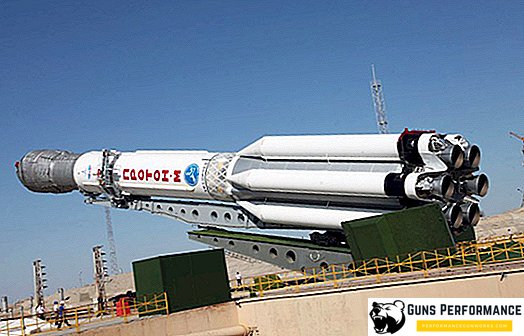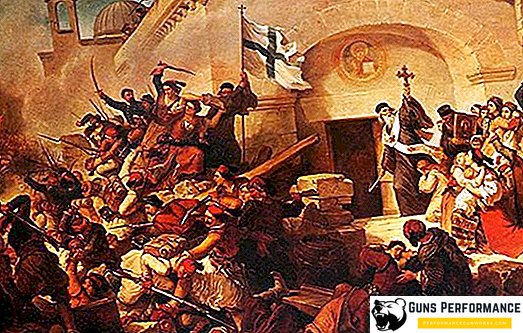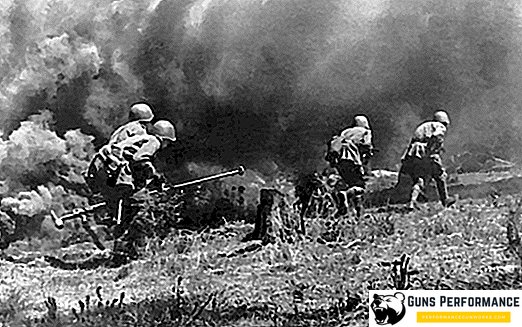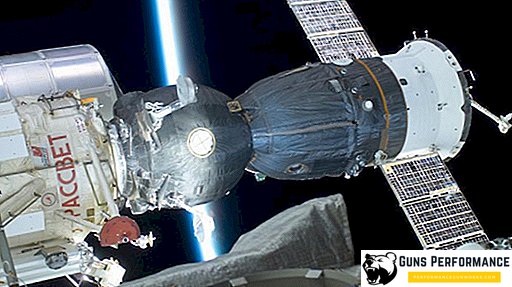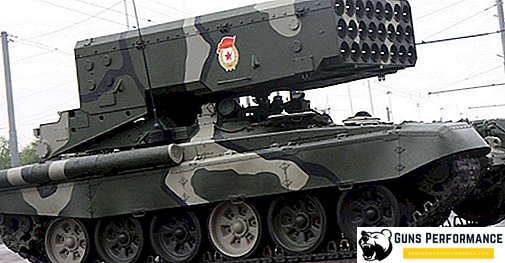In 2018, Armen Sargsyan took the office of President of Armenia and replaced the ex-President Serzh Sargsyan in this position. The inauguration ceremony was held in Yerevan at a meeting of the National Assembly. A. Sargsyan is the first Armenian president elected and appointed to this position by parliamentarians. Thus, in 2018 a constitutional referendum was held in Armenia, according to its results, the country adopted the status of a parliamentary republic.
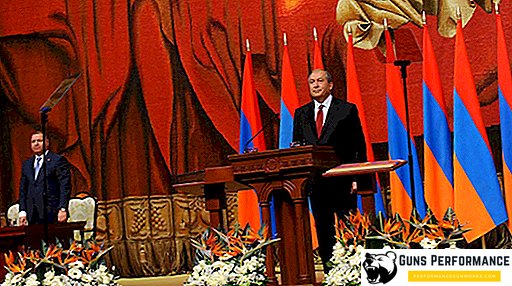
The inauguration took place on April 9 during a special meeting of the National Assembly (Armenian parliament) on the territory of the Karen Demirchan Sport and Concert Complex in the capital of Armenia, Yerevan. The new, fourth president of Armenia began to exercise his powers on April 9, 2018. In accordance with the new Constitution, the presidential powers have been seriously reduced, and, accordingly, the goals and tasks to be solved by the head of state, but he is issuing decrees. Most of them took over the executive and legislative branches of government, that is, the government and parliament.
The list of powers and duties of the President of Armenia until April 9, 2018
In accordance with Article 55 of the Armenian Constitution, which was reformed in 2005, the duties of the President of Armenia include:
- Appeal to the people, as well as to the representatives of the National Assembly;
- Following the receipt of laws passed by the National Assembly, he is obliged to sign and publicize them during the 21-day period; at the same time it is possible to return laws in which objections, proposals may be stated, as well as a requirement in their new discussions. When they are rejected by the National Assembly by a majority of votes of the total number of parliamentarians, then the president deals with the signing and promulgation of laws and presidential orders for 5 days;
- In cases where this is established by the Constitution, it may undertake the dissolution of the National Assembly with the appointment of extraordinary elections;
- In accordance with the distribution of seats for members of the National Assembly and consultation events with parliamentary factions, may appoint a prime minister. As a rule, it is a person who enjoys the confidence of the majority of the deputies. And when this is not possible, a person who enjoys the confidence of the largest number of parliamentarians; in accordance with the proposal of the Prime Minister may appoint and dismiss ministers; can accept the resignation of ministers on the day of his assumption of the presidency of Armenia, open the first meeting of the new convocation of the National Parliament, express mistrust to the government, reject government programs, dismiss the prime minister, or leave his place vacant;
- In cases where this is provided by law, may make the appointment of public servants;
- He may be engaged in the formation of the National Security Council, chair it, as well as the formation of other advisory bodies;
- Representation of Armenia in the international arena. He may engage in the general administration of foreign political activity, conclude international treaties, present international treaties for ratification by the National Assembly and sign their instruments of ratification, approve, suspend or denounce international treaties that do not require ratification;
- Appointment and recall of diplomatic representatives of Armenia in foreign countries and with international associations, acceptance of credentials and revocation letters of diplomatic representatives of foreign countries and international associations;
- Presentation for the National Assembly of candidates to the Prosecutor General, the Head of the Central Bank, as well as the Head of the Control Chamber. At the suggestion of the Prosecutor General, the appointment and release of the Deputy Prosecutor General;
- Appointment of four representatives of the Constitutional Court. In cases where the National Assembly did not appoint the head of the Constitutional Court within thirty days after leaving his seat vacant - the head of the Constitutional Court from representatives of the Constitutional Court; Based on the opinion of the Constitutional Court, may terminate the duties assigned to them by the members of the Constitutional Court;
- The appointment, on the recommendation of the Council of Justice, of the chairman and judges of the Court of Cassation and in his chambers, the chairman of the Court of Appeal, the courts of first instance and special courts, the termination of their powers;
- The appointment of a pair of legal scholars who are members of the Council of Justice;
- To be the Supreme Commander for the Armenian Armed Forces, coordinating the activities of state bodies in the defensive sphere, the appointment and release of senior commanders in the Armed Forces and other military formations; in cases of declaring war, may be engaged in the appointment and release of the Commander-in-Chief for the Armed Forces;
- Declaration of martial law in cases of armed aggression against Armenia, when there is an immediate threat or war is declared. In addition, it may be engaged in declaring general or partial mobilization and making decisions on the involvement of the army;
- Declaration of a state of emergency in cases where an imminent danger threatens the constitutional order, following consultations with the head of parliament and the prime minister, taking measures dictated by circumstances and addressing his people to all this;
- Resolving issues in accordance with the procedure established by law, which are related to the granting of Armenian citizenship or political asylum;
- Awarding orders and medals of the Armenian state, awarding the highest military and honorary titles, the highest diplomatic and other class positions;
- Implementation of clemency for convicts.



The list of powers and duties of the President of Armenia after the reform of April 9, 2018
During the passage of the Constitutional referendum, which was held in December 2018, adopted constitutional changes. This suggests that Armenia has grown into a parliamentary republic. In this regard, presidential powers were significantly reduced.
In accordance with the new edition of the Constitution, the head of state makes the appointment of regular and extraordinary parliamentary elections. In addition, for 21 days, he is engaged in signing and promulgating laws adopted by the National Assembly. The President of Armenia no longer has the right to dissolve the National Assembly, as well as to appoint extraordinary elections. He can accept resignation in cases when it is established by the Constitution of the Government, in agreement with the Prime Minister, to make changes in the Cabinet of Ministers.

In the foreign policy sphere
According to the new status of the President of Armenia, his powers in the foreign policy sphere were reduced. In accordance with the cases and procedures established by law, the head of state may, in agreement with the government, enter into international treaties, appoint and revoke, as agreed with the prime minister, diplomatic representatives in foreign countries and international associations, accept credentials and revocations of diplomatic representatives of foreign countries and international associations.
The President of Armenia, in agreement with the government in accordance with the cases and procedures established by law, will approve, suspend or denounce international treaties that do not require ratification.
In the field of the armed forces
The newly elected Armenian presidents, in agreement with the Prime Minister in accordance with the cases and procedures established by law, may be engaged in the appointment and release of top commanders in the armed forces and other military formations, as well as in accordance with the cases and procedures established by the laws, and the assignment of higher military ranks. All subsequent presidents can no longer be the Supreme Commanders of the Armenian Armed Forces, since in the event of a declaration of war, the Prime Minister will now deal with these powers. Presidents, like parliamentary speakers, will no longer be part of the new Security Council.

A list of all the presidents of Armenia in order over the years of their rule
- Levon Ter-Petrosyan from October 16, 1991 to February 3, 1998;
- Robert Kocharyan from April 9, 1998 (February 3, 1998 - April 9, 1998 - Acting President) to April 9, 2008;
- Serzh Sargsyan from April 9, 2008 to April 9, 2018, spent two consecutive terms;
- Armen Sargsyan since April 9, 2018.
Salary Amount and Benefits Received
The official annual salary of the President of Armenia, according to the local press, receives in the amount of 3 million 898 thousand 800 drams. What is the current rate of 8,036,221.22 US dollars. For all that, the income of the former head of the Armenian state was not limited to salary alone. Among other things, another 2 million 45 thousand 89 drams, the former president received as a payment, equal to its cash content. But that's not all.
An additional 8 million 740 thousand drams are paid to Serzh Sargsyan as an interest rate. By the time the declaration was submitted, Serzh Sargsyan’s financial position was 105 million 600 thousand drams. In addition, the former president was the owner of a wide variety of precious antiquarian articles of the 18th-20th centuries, as well as a collection of works of art by famous Armenian artists of the 20th century, a total of more than thirty canvases. Information on open sources was not found on any special privileges for the Armenian presidents.

Residence of the President of Armenia in Yerevan
The residence (reception) of the President of Armenia is the building of the former Supreme Soviet of the Armenian SSR. He was designed, like many other interesting architectural works of that time, by the talented architect Mark Grigoryan in 1949-1950. Construction work was carried out in 1951-1953. Practically everything that Grigorian created in those years is an ornament of Yerevan, and perhaps for a long time will represent traditional Armenian classical architecture.
How to become the President of Armenia after April 9, 2018
A person at least thirty-five years old can be elected President of Armenia. Moreover, over the past decade, he should have Armenian citizenship and not have the citizenship of another state, permanently reside in Armenia for the past ten years, and also have the right to vote. Earlier, the president was elected for a five-year term, and after April 9, 2018, for seven years. The same person may not be elected to the position of President of the Republic more than two times in a row. Elections are not held during a state of emergency or martial law.
As previously mentioned, the powers of the Armenian president were significantly curtailed. Thus, the election of new presidents will no longer be direct, (that is, there will not be a nationwide vote) but will be mediated by the electoral college. Deputies of parliament, as well as representatives of local authorities take part in this. New presidents will be elected for a seven-year term, and without the right to re-election.

Subsequent presidents will be elected by parliament, and the process of nominating candidates will require at least 27 deputy votes. Only the candidate who would be voted for by three quarters of the members of parliament, that is, at least 79 deputies, could win the elections. In cases where no candidate has managed to gain the necessary number of votes, then the second round is announced, and to win in which you will need to collect three-fifths of the votes of parliamentarians.





